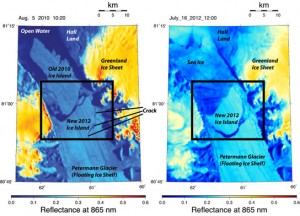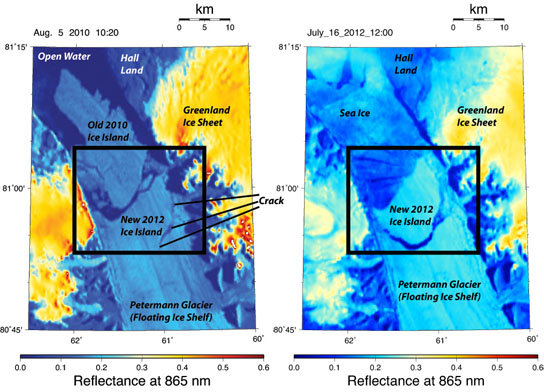Does 2.75 degrees Celsius sound like a lot? For American readers that translates to 5 degrees Fahrenheit. Now when you say it in Fahrenheit it starts to sound like a lot more. And it represents continuing evidence of rapid climate change in the high Arctic, a phenomenon being seen not just in Greenland but throughout the Northern Hemisphere.
This rise in temperature was just a comment in an article that announced a new ice island had formed at the foot of the Petermann Glacier connected to the main Greenland ice sheet. This ice island was the second large section of ice to calve off the Petermann in the last three years. In 2010 a chunk four times the size of Manhattan broke off eventually drifting into open water and spawning ice bergs as it melted. This new block of ice is 120 square kilometers (46 square miles), twice the size of Manhattan.
Data being collected in the area showed temperatures in Northern Greenland and Ellesmere Island, its Canadian neighbour to the west, as rising 0.11 degrees Celsius on average per year since 1987. That’s how we calculated the 2.75 degrees.
Scientists who study climate change caution that air temperatures above Greenland are not the direct cause of large pieces of ice breaking off from the face of the glacier. Ocean temperatures are the more likely culprit but water temperature data in the area has only been collected for the last eight years and that is considered too short a window to indicate a trend.
The last time sizable ice chunks broke off glaciers in the area was in 1962 when a 596 square kilometer (230 square miles) broke off a glacier on Ellesmere Island.

Northern Greenland and Ellesmere Island are warming at a rate five times faster than the average around the world.
Evidence of global warming caused by human activity or is this just cyclic?









